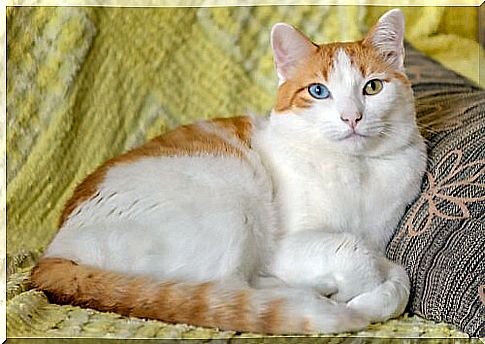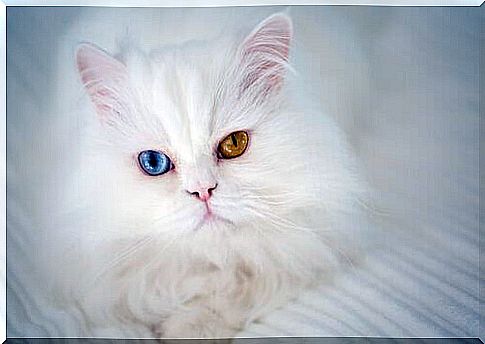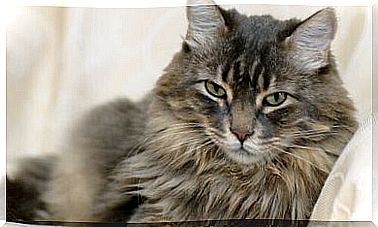Heterochromia In Cats And Dogs: A Peculiar Condition

Heterochromia is an anatomical condition that causes dogs and cats to have one eye of each color, or the same iris with a different color.
There is an anatomical condition that causes the irises in the eyes of a human or an animal to be different colors. Therefore, today we will talk about heterochromia in dogs and cats.
Know details about this particular condition.
Although this color variation can also affect the fur or skin, it is more common to be seen in the eyes.
In this case, it is also known as iris heterochromia or Iridum heterochromia . Its cause is an excess or shortage of a pigment called melanin.
It is noteworthy that this feature does not affect the quality of vision and that, in most cases, it manifests itself in puppies and for genetic reasons. In addition, there are different types of heterochromia:
- Complete: is the most common. That is, one eye of each color.
- Partial or sectorial: different colors in the same iris. In this case, this condition is usually caused by hereditary conditions such as Waardenburg syndrome or Hirschsprung disease.
- Central: The center of the iris is a different color from the middle-peripheral part.
Animals with white fur or blemishes tend to have this characteristic. However, in any case, heterochromia can appear in cats and dogs of different colors and breeds.
How heterochromia manifests in cats
Complete heterochromia is most commonly seen in cats, especially those with a dominant white epistatic gene or a white spot gene, which generates specimens with bicolored fur.
Generally, animals have one blue eye and one green, yellow or copper eye. However, there are also cases of felines with multiple colors in one eye.

While many believe that cats with two eye colors are deaf, the majority (about 70%) can hear without difficulty.
However, white kittens with one or both blue eyes are more likely to suffer from deafness.
We must take into account that domestic cats are born with blue eyes due to lack of melanin.
Also, your true tone forms between the 7th and 12th week of your life.
The cat breeds that most commonly show this irregularity are:
- Turkish Angora
- Persian
- Japanese bobtail
- Turkish van
- Khao Manee
- Sphinx
- british shorthair
Heterochromia in dogs
Dogs can also show complete heterochromia. As such, this condition usually occurs in breeds such as the Siberian Husky, Dalmatian or Australian Shepherd.

Partial heterochromia, on the other hand, usually also appears in Australian shepherds and in specimens of:
- border collie
- German dog
- Pembroke Welsh Corgi
However, it is not necessary for dogs to be of breed to develop this condition. Heterochromia is also manifested in mixed-breed animals.
More information on eye coloring
Keep in mind that different colored irises can also be caused by other causes. Between them:
- Injuries, bleeding, inflammation or foreign objects in the eye
- genetic mosaicism
- Glaucoma
- Some medications
In any case, in the slightest doubt you should consult your veterinarian to determine if your pet requires any special treatment or care.
The truth is that cats and dogs with this characteristic, of breed or not, draw attention to the color of the eyes, which give them a particular beauty.
But anyway, if you have a pet with heterochromia, make sure it doesn’t have a health problem.









